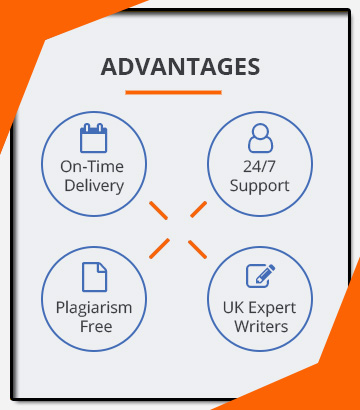Learning outcomes addressed
- Understand and justify how organizations secure and deploy their resources both in a traditional and digital environment according to their capability and capacity
- Understand and evaluate and use business data analysis to provide a range of solutions for a business problem
- Use all appropriate information and internet-based technologies available effectively within a professional context
- Understand how organisations use technologies to communicate effectively with stakeholders.
- Analyse a business situation and provide a number of possible suitable solutions.
- Communicate effectively in an appropriate medium and style with regard toaudience and desired emotional effect
Report Brief
The portfolio assessment will examine the body of knowledge derived from a range of learning outcomes covered in the module and allows students to undertake research and investigations and make conclusions on business cases.
Portfolio contents include the following ITEMS WHICH ARE:
(1) simulation game score relating to an operation’s business performance for Module 1 and Module 2 (3 attempts required for each module and 3 screenshots in total provided);
(2) ~550 written words considering the fundamentals of operations management in an applied context drawn from module 1 of the game;
(3) and a further ~550 written words considering a specific applied operational practice as related to a set of critical questions drawn from module 2 of the game. AND
(4) Brief conclusions paragraph (no more than 100 words)
Note that the result of the game will not be used to determine your mark for Assessment 1; it is pertinent though that the outcome is used to show that you have learned theoretical and practical perspectives of operations management from the simulation experience.
The Portfolio Assessment should include the topic areas covered in the first 4 weeks of the semester showing your knowledge and understanding of:
- The current functional purpose of operations management
- Supply chain management
- One screenshot with a report of your attempts (3 attempts per module)
- One Screenshot with the financial history for module 1
- One Screenshot with the financial history for module 2 (PowerPoint slides on Blackboard for more details)
- 2.1 Introduction – Identify &Discuss Operations management in the manufacturing context within the simulation game and how it can make a business sustainably profitable
- 2.2 Operations in practice -Apply theories of operations management in the context of the textile factory that boost customer satisfaction and optimise performance
- 2.3 Operations performance –Evaluate the impact of operational decisions in the manufacturing context and discuss how can technology enhance performance
- 3.1 - Supplier selection process – In the simulation game you are required to select suppliers from whom you will order the raw materials required for the manufacturing process; identify the major concepts of supply chain management and discuss the way the supplier selection is done to enhance the efficiency of the firm. Provide applied examples of the supplier selection within the simulated environment and reflect on the significance of transparency. Explain how sustainable business strategy is important when considered individually as well as part of an operational strategic rationale.
- 3.2 - Delivery of finished goods to your customers –Explain the process of managing the fulfilment of the contract and the implications of ‘inspecting quality’. Examine how you address possible disruptions in the normal flow of goods and materials and how you can potentially prevent itor minimize its impact using various operational techniques.
In Section 1 you must provide three screenshots from the simulation game.
Section 2 Written reflection on operational business decisions made within the game. In section 2 you must present your work in three subsections which are as follows:
Section 3 – Undertaking supply chain management responsibilities. In section 3you must present your responses to the tasks and questions based on the context of the factory environment within the game in two subsections which are as follows:
You need to demonstrate understanding of how organizations effectively manage
the range of operational functions and e-business in an evolving business context, as well ability to reflect on operations principles while making informed suggestions using theories and applied practices with the support of academic sources.
The report must include evaluation and reflection on the practical application of operations management theories and principles with reference to the simulation game (modules 1&2) and supported by findings from academic and practitioner literature. You must use reputable and recognised sources to conduct your research and avoid using obscure websites.
The deadline for the report is
You are allowed multiple attempts at submission leading up to the deadline.You will be able to see your Turnitin similarity score after each attempt’s submission.
Report Organization
The length of the report is 1200 words (+-10%) –The limit excludes game score result reports, title page, table of contents, diagrams, tables, figures, reference list and appendices.
You should write in clear, concise and correct English. Remember to Spell check, Grammar check and Proofread. As this is a reflection you are allowed to use 1st person when writing.
Format: PDF or word doc, page numbers, 1.5 line spacing, normal margins, Arial 12 point font
Document Name: Ops_Dig_Bus_A1_PORTFOLIO
Assessment title: Operations& Supply ChainManagement in Manufacturing
The report should have a suitable structure and may follow the recommended structure:
- Title Page(state the title,your name, ID and the word count)
- Disability Statement(if applicable)
- Table of Contents
- Section 1 - Simulation Game Score Screenshots
- Section 2 - Written reflection on operational business decisions made within the game
- Section 3 – Undertaking supply chain management responsibilities
- Conclusions
- References
- Appendices
Marking Scheme
This is an individual assignment and is worth 50% of the total marks available for this module. Each student must submit an electronic copy of their report to Blackboard. The marking scheme for the report is shown below in general as well as individual aspects broken down in the end:
|
|
Max marks
|
|
Introduction
|
10%
|
|
Use of theory
|
25%
|
|
Analysis/Findings
|
40%
|
|
Conclusions
|
5%
|
|
Referencing
|
10%
|
|
Presentation and structure
|
10%
|
|
Total
|
100%
|
Please note that marking criteria should not be seen as the structure of the report nor expected headings of your report. You should view the marking criteria as a useful indicator about the level you need to achieve for your work.
Note that textbook descriptions of methods, tools and techniques will not be given marks, although a brief description or outline of such techniques may be necessary.
Mitigating Circumstances
Students may use the formal Mitigating Circumstances procedures to justify the late submission or non-submission for valid reasons. Pease note that the Module Leader cannot grant any extensions. Any requests should be made to the Mitigating Circumstances Board and supported by appropriate evidence. For more information on this please contact the WBS Registry.
Anonymous Marking (if applicable)
Although in most cases summative assessments are marked anonymously, this one is exempt from that policy. Therefore, you can use your name and ID in the cover page.
Referencing
When writing a report, you will need to support your arguments by referring to published work such as books, journal or newspaper articles, government reports, dissertations and theses, and material from the Internet. All work must be fully referenced and follow the correct referencing style guide. You must include at least 8 references in the report.
It is expected that you use the Westminster Harvard Referencing style within this work. You may want to consult the referencing style guide at Referencing your Work.
Academic Offences
Academic offences, including plagiarism are treated very seriously. Plagiarism must be avoided at all costs and students who break rules, however innocently, will be penalised. All submitted work is passed through ‘Turnitin’ system to determine the originality score.
It is your responsibility as a student to make sure that you understand what constitutes an academic offence, what plagiarism is and how to avoid it. Consult the Handbook of Academic Regulations for more information.
Report Feedback
Report feedback will be available end ofWeek 10. Electronic feedback sheet will appear on blackboard. Further feedback can be given individually if/when necessary. All marks are classed as provisional until approved by the final Examination Board.
REMEMBER:
It is a requirement that you submit your work in this way. All coursework must be submitted by 1.00 p.m. (13.00) UK time on the due date.
If you submit your coursework late but within 24 hours or one working day of the specified deadline, 10% of the overall marks available for that element of assessment will be deducted, as a penalty for late submission, except for work which is marked in the range 40 – 49%, in which case the mark will be capped at the pass mark (40%).
If you submit your coursework more than 24 hours or more than one working day after the specified deadline you will be given a mark of zero for the work in question.
The University’s mitigating circumstances procedures relating to the non-submission or late submission of coursework apply to all coursework.
Georgia Markoudi 07.12.2020

